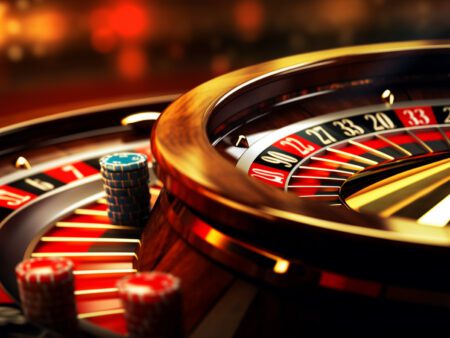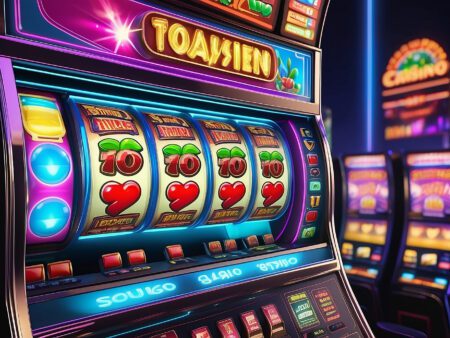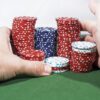Understand the strategic tool of bluffing in poker. Learn when, why, and how to execute a successful bluff and turn the tables even in unfavorable situations.
Bluffing in Poker: When, Why, and How to Execute It
Imagine sitting in a high-stakes poker game, heart thumping, palms getting clammier as you face-off against a formidable opponent. You’ve been dealt a lackluster hand, but still your eyes glare with unflinching confidence. What drives this confidence is not the cards you’re holding, but the strategy you’re about to employ: the art of bluffing in poker.
Understanding Bluffing
Bluffing is a practical tool nestled in the arsenal of every poker player, professional or enthusiast; it is a deceptive strategy designed to make opponents believe you have a stronger hand than you actually do. It’s a mind game, a balancing act of risk and reward that can turn the tables even when luck abandons you.
However, it is essential to understand that the power of bluffing doesn’t lie merely in its execution, but in when, why, and how it’s carried out. Over-bluffing or bluffing at inappropriate times can often have counter-productive results.
The ‘When’ of Bluffing
The effectiveness of a bluff depends largely on timing. One crucial factor to consider is the number of players in the hand. Bluffing tends to be more successful against a single opponent rather than against multiple players. On a broader scale, picking the right game stages to bluff – pre-flop, flop, turn, or river – also requires strategic thinking.
The ‘Why’ of Bluffing
To determine whether to bluff, consider the potential outcome. Sometimes, it can be to your advantage to bluff simply to plant seeds of unpredictability among other players. They begin to second guess their own hands and your unpredictable nature can tilt the table in your favor even in future hands.
The ‘How’ of Bluffing
The actual act of bluffing varies tremendously from player to player. It could be a poker face that gives nothing away or a cleverly planned betting pattern that throws opponents off your scent. Weaving a believable bluff requires a keen understanding of your own playing style and the perception others have of you.
Ultimately, the key to a successful bluff in poker is the intricate blend of the when, why, and how, paired with a deep understanding of the game and the human element found at the poker table.
The ‘When’ in Bluffing
Knowing when to bluff is the first step in mastering this skill. The timing largely depends on the playing field and the tendencies of other players. The larger the number of players in the hand, the riskier the bluff since the chances of someone having a strong hand increases. Therefore, bluffing is often more successful in a one-on-one scenario.
Besides the number of players, the stage of the game also plays a significant role in when to bluff. A pre-flop bluff might work if your image is tight, but bluffing on the river requires a stronger sense of the table, the pot odds, and a keen read on your opponent’s hand. Remember, successful bluffing is about more than mere bravado; it’s measured, calculated risk.
The ‘Why’ in Bluffing
Understanding why you are bluffing is just as important as knowing when. Are you bluffing to make a poor hand seem stronger? To throw off your opponents’ perception of your tactics? Or perhaps to nudge an opponent into folding a marginal hand? Each bluff carries an inherent risk, so ensure it’s worth the potential reward.
The ‘How’ in Bluffing
The ‘how’ encapsulates everything from your body language to your betting patterns. Successful bluffers maintain a consistent style, making it difficult for their opponents to decipher when they are bluffing. This is not far removed from developing a winning strategy for single-deck blackjack, where understanding the game dynamics and maintaining a consistent strategy is key.
Maintaining a poker face, controlling involuntary tells, managing betting speed, and manipulating pot size are all part of the bluffing equation. But arguably, the golden rule in bluffing is unpredictability. If your opponents cannot read your play, they can’t counter it.
To Conclude
Bluffing is an integral part of poker, turning it from a game of luck into a game of skill. However, it isn’t a strategy to be used wildly, and a bluff gone wrong can cost you dearly. It’s a tactic, a tool, not a game plan unto itself.
Using a combination of knowledge, experience, and careful judgement, proficient players use bluffing to manipulate their opponents and turn the odds in their favor, much like a well-planned strategy in a game of single-deck blackjack. So, the next time you sit at the virtual or real table, remember this: In the world of poker, sometimes the game isn’t about having the best hand—it’s about convincing others that you do.
What’s your experience with bluffing in poker? Do you have any tips or tricks that you would like to share with our readers? Let’s continue the conversation in the comments below.










